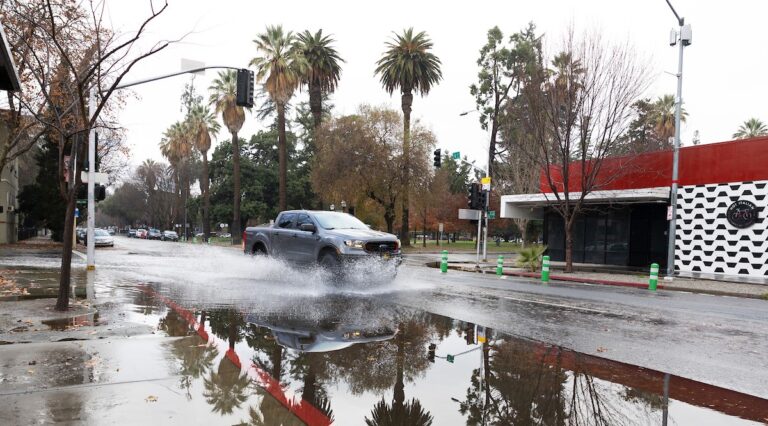Rain falls in Sacramento Monday morning. Photo taken December 19 , 2023. Andrew Nixon / California Department of Water Resources
National assessment quantifies vast potential to capture urban stormwater, volume equivalent to more than 90% of annual municipal and industrial water withdrawals
The Pacific Institute, a US-based global water think tank, in partnership with 2NDNATURE today released a new national assessment finding substantial opportunities for expanded stormwater capture and use approaches to improve water resilience in urban areas across the United States. The pivotal study quantifies the volumetric potential of stormwater runoff in urban areas, finding 59.5 million acre-feet per year (AFY) of urban stormwater runoff is generated, exceeding earlier estimates. This is equivalent to an annual average of more than 53 billion gallons per day.
The report, entitled “Untapped Potential: An Assessment of Urban Stormwater Runoff in the United States,” was developed using a spatially distributed modeling approach from 2NDNATURE to fill a gap in comprehensive national data. The analysis concludes that urban stormwater capture is currently underutilized. It also finds that greater uptake of this strategy could improve water resilience by mitigating impacts on communities from intensifying flooding and drought driven by climate change, diversifying water supplies to address water scarcity risks, and reducing water pollution. While the findings are specific to the United States, insights from the assessment can inform water resilience strategies globally.
“The numbers are clear. It’s time to elevate the role of stormwater capture in the national water conversation,” said Dr. Bruk Berhanu, Senior Researcher at the Pacific Institute and lead author of the report. “Urban communities across the country are grappling with water scarcity risks, more severe and frequent flooding and drought due to climate change, and constraints on traditional water supplies. There is vast opportunity for stormwater capture strategies to help solve many of these challenges, enhancing overall water resilience.”
The Pacific Institute will host a webinar to discuss the report’s results and recommendations on March 19, 2024. Register here.
Key findings of the analysis include:
- National volumetric potential: Urban areas in the United States generate approximately 59.5 million AFY of stormwater on average. This is equivalent to 93% of total municipal and industrial water withdrawals in 2015, the most recent year with available data.
- Outsized coastal opportunities: Coastal subbasins present an outsized opportunity for increased stormwater capture. While coastal subbasins constitute just 12% of urban land area, they generate 37% (21.9 million AFY) of the national stormwater runoff potential. The authors note it is not feasible, legal, or desirable to capture all urban stormwater runoff. In some areas, for example, downstream users, including ecosystems, rely on those flows to meet their water needs. However, capturing runoff in coastal subbasins could have fewer adverse impacts on downstream users and can also improve water quality in coastal waterways.
- Top states: The states with the greatest urban area stormwater runoff potential include Texas (7.80 million AFY), Florida (4.12 million AFY), Georgia (2.77 million AFY), Louisiana (2.61 million AFY), Ohio (2.50 million AFY), Illinois (2.47 million AFY), North Carolina (2.38 million AFY), Pennsylvania (2.35 million AFY), California (2.27 million AFY), and Tennessee (2.17 million AFY). While these states show the greatest volumetric potential, the authors note there may still be a compelling case for greater adoption of stormwater capture in urban areas with lesser potential. Even in these areas, stormwater capture can make a meaningful contribution to augmenting and diversifying supplies, especially important with climate change, and can offer other benefits such as mitigating urban heat island effect and increasing community greenspace.
Stormwater capture strategies include a diverse range of approaches that can be pursued at a variety of scales. Applications include traditional grey infrastructure, such as storm sewers that route stormwater to treatment plants for reuse and storage ponds for […]
Full article: mavensnotebook.com

